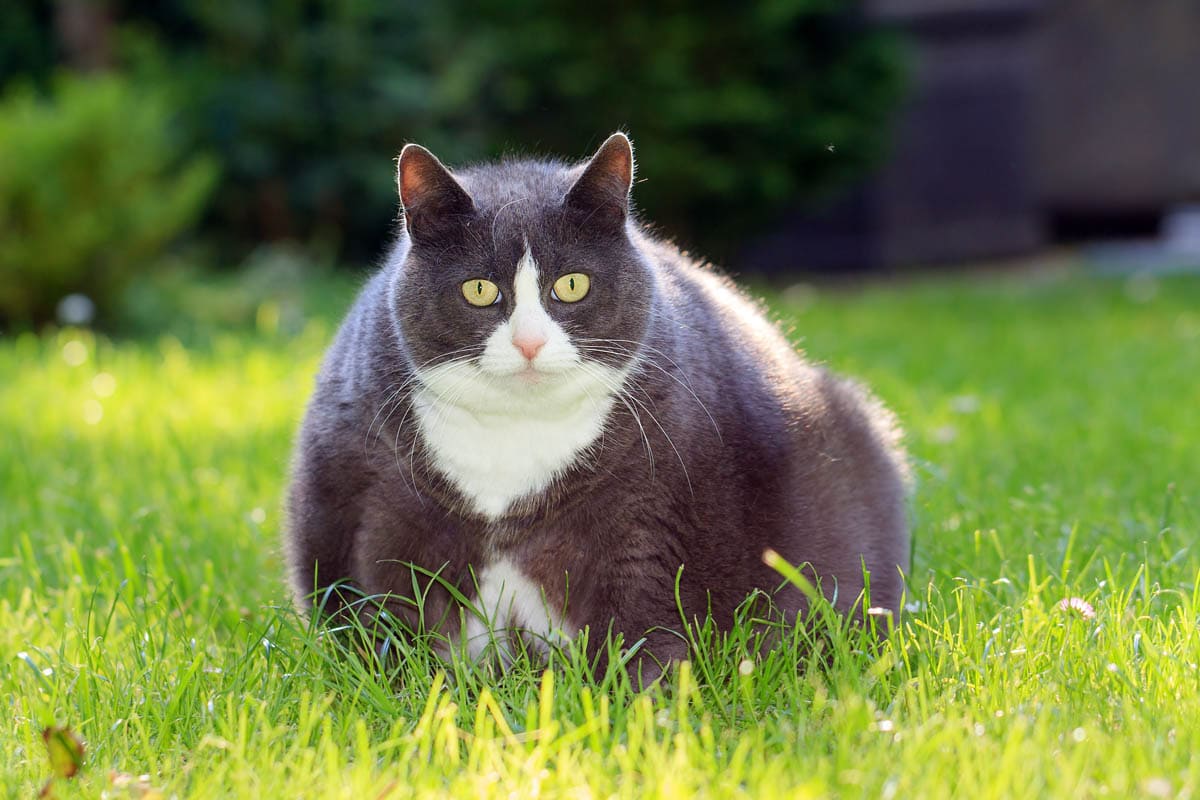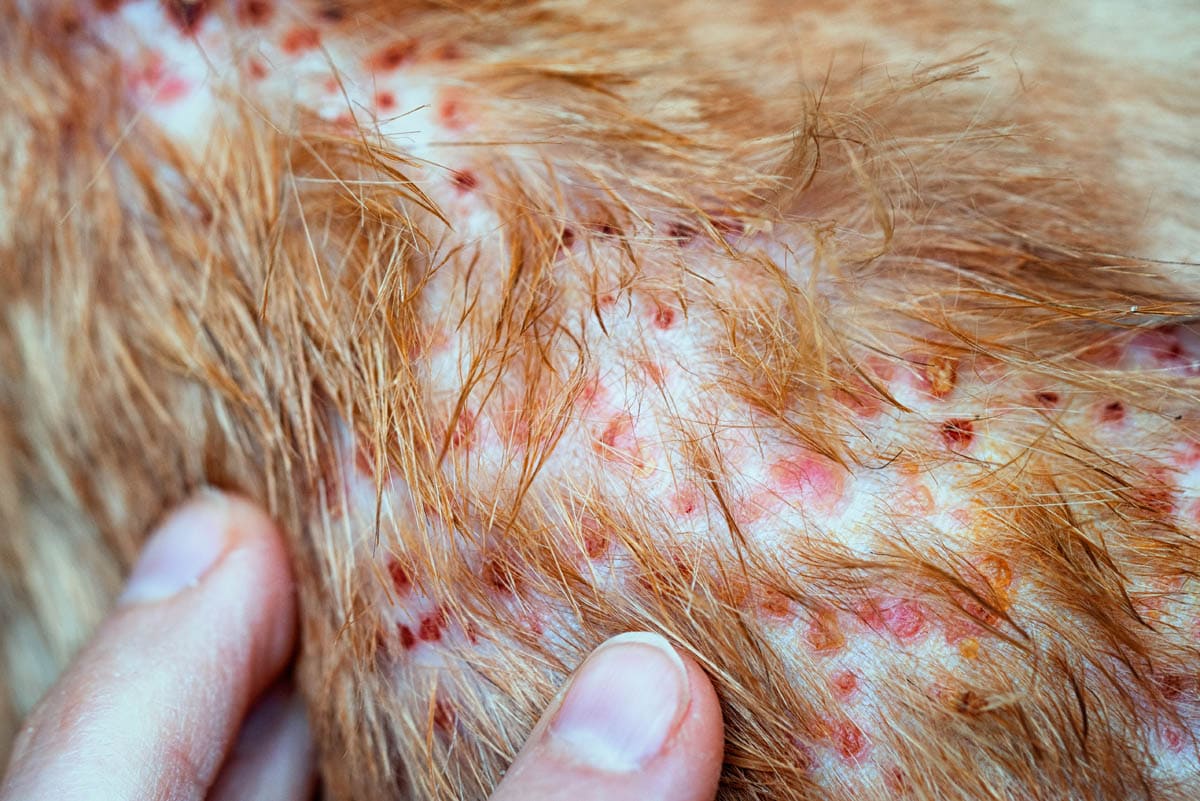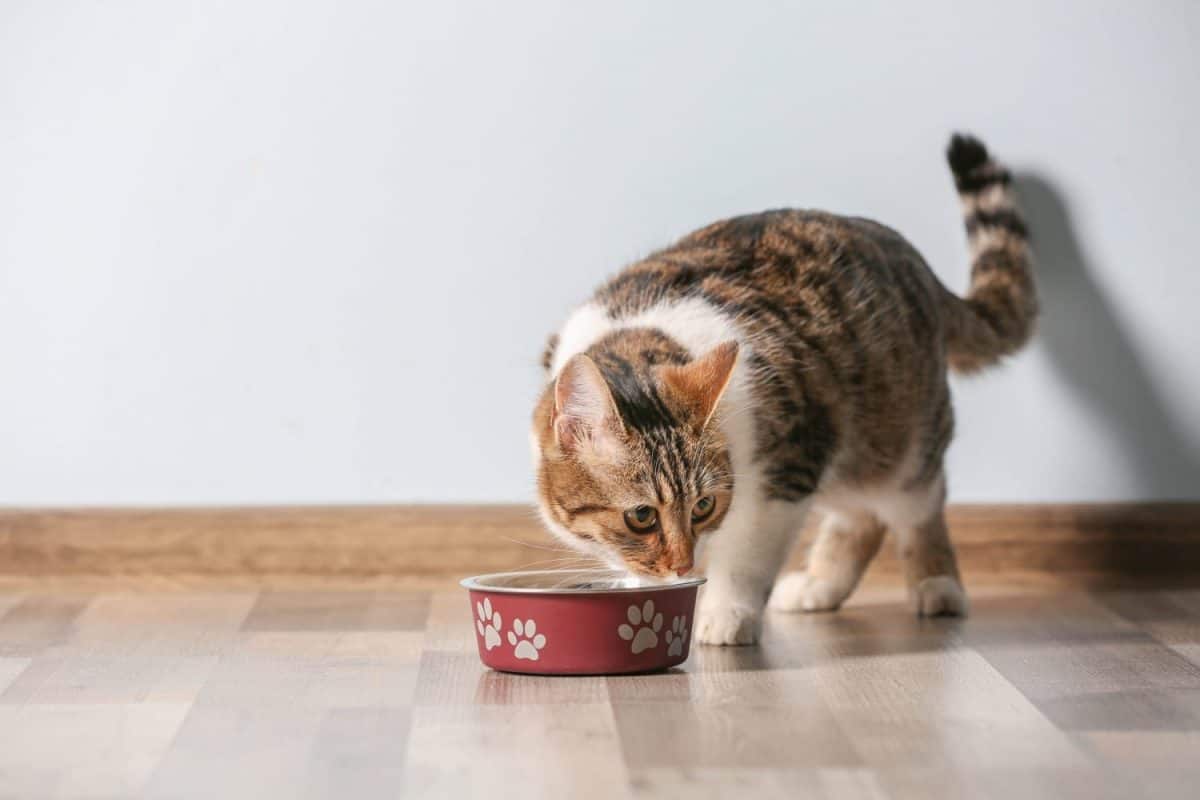Prescription diets are diets for cats to provide supportive care for a sick cat, prevent, manage or treat a medical condition. These diets only used to be available from a veterinarian; however, the majority are readily available to purchase online.
Always speak to a veterinarian before you switch a cat to a prescription diet. Some prescription diets can be dangerous if the cat has a concurrent condition.
It is not possible to list all brands, as some are country-specific, but will include major brands. Most prescription diets are available as dry or canned food.
Weight management

Obesity is endemic among cats, with 50% of cats overweight or obese which has a severe impact on a cat’s health. Weight-loss diets are low in calories, high in protein and fibre, which gives the cat a feeling of fullness.
Indications: Weight loss and weight control.
Brands: Hills metabolic, Hills r/d, Hills w/d, Royal Canin Veterinary Diet Obesity Management Cat Food, Purina One Cat Healthy Weight (maintenance).
Diabetes

Diabetes is a common disease where the cells build up a resistance to insulin, a hormone necessary for glucose to enter the cells. As a result, glucose levels build up in the bloodstream.
There is a great deal of focus on high protein and low carbohydrate diets by switching from dry food, which is high in carbs, to canned food or home-prepared diets. Carbohydrates cause sudden spikes in glucose, which increases the production of insulin; however, the glucose is unable to enter the cells.
Some cats have had their diabetes reversed by switching to a low-carbohydrate diet (diabetic remission).
Indications: Diabetes.
Brands: Hill’s m/d, Royal Canin Diabetic, Purina DM.
Joint care

Osteoarthritis is a common disorder of the joints which occurs in middle-aged to senior cats. Cartilage is the smooth, slippery tissue over the ends of the bones in the joints. Its role is to act as a cushion and shock absorber and allows the bones to glide over each other. When osteoarthritis develops, this slippery layer breaks down and wears away exposing the bones causing pain, inflammation, and stiffness. As the disease progresses, loss of movement can occur in the affected joint.
Nutraceuticals are foods or food compounds which have a medical benefit.
- Glucosamine – Glucosamine is a sugar produced by the body and a building block of cartilage. Glucosamine supplements can help to slow the breakdown of cartilage and help damaged cartilage to heal.
- Chondroitin sulfate – A naturally occurring molecule and vital part of cartilage that may stop cartilage degrading along with drawing water to the joint.
- Omega 3 fatty acids – Natural anti-inflammatory supplements which can be added to food.
Hill’s j/d contains high levels of omega-3 fatty acids, glucosamine and chondroitin to reduce inflammation in arthritic joints and help slow down progression.
Indications: Arthritis.
Brands: Hill’s j/d, Blue Buffalo KM Kidney + Mobility Support
Digestive health
Digestive health is crucial for the overall health of the cat. Common intestinal problems include includes infection or inflammation (gastritis, enteritis, colitis), gastrointestinal surgery to exocrine pancreatic insufficiency. When digestion is impacted, the cat cannot obtain energy or repair tissue.
Digestive health diets are easy to digest, which are easy to break down and fuel the body and contain antioxidants and probiotics.
Indications: Gastrointestinal disorders, inflammatory bowel disease, exocrine pancreatic insufficiency and recovery from gastrointestinal surgery.
Brands: Hill’s i/d, Blue Buffalo Blue GI Gastrointestinal Support, Eukanuba Healthy Digestion, Eukanuba Intestinal.
Recovery and critical care

Cats recovering from illness, trauma or anorexia (loss of appetite), malnutrition require energy to get well. Recovery diets are highly palatable, easy to digest and nutrient-dense.
Indications: Loss of appetite, recovery from surgery (including dental), hepatic lipidosis, tube or syringe feeding.
Brands: Hill’s a/d, Royal Canin Recovery, Purina CN Convalescence.
Hyperthyroidism
Hyperthyroidism (FHT) is an endocrine (hormonal) disorder that is caused by the overactivity of the thyroid gland due to a benign tumour of the thyroid gland which speeds up your cat’s metabolism.
Hills y/d is low in iodine, which is required by the thyroid gland to produce its hormones; low iodene=reduced hormone production. It can take a few weeks for this food to take effect.
Indications: Hyperthyroidism.
Brands: Hill’s y/d.
Urinary care
Formerly known as FUS (Feline Urologic Syndrome), FLUTD (feline lower urinary tract disease) is a group of conditions affecting the cat’s lower urinary system and bladder, including urolithiasis (stones in the urinary tract), cystitis (inflammation of the bladder), urinary tract infection and urethral obstruction.
Crystals and stones form when the urine becomes supersaturated with excess minerals. The composition varies depending on the pH and the mineral content of the urine. Struvite (magnesium ammonium phosphate) and calcium oxalate are the most common form of urinary stones. Diets play an important role in the development of crystals and stones.
- Diets high in magnesium, phosphorus, calcium and sodium, as well as alkaline urine, promotes the formation of struvite stones.
- Calcium oxalate stones can develop in cats who are fed low potassium and sodium diets or diets formulated to increase urine acidity.
Urinary diets are designed to promote a healthy urine pH (between 6 – 6.5) as well as dissolve struvite stones. There are no effective diets to dissolve calcium oxalate stones.
Brands: Hill’s c/d Multicare, Hill’s s/d (stone dissolving struvite crystals), Royal Canin Veterinary Diet Feline Urinary S/O, Science Diet Adult Urinary Hairball Control.
Indications: Urinary crystals or stones (struvite), cystitis.
Cats with calcium oxalate crystals or stones do better on a wet diet to increase moisture consumption, with reduced quantities of protein, calcium, oxalate, vitamin C, and vitamin D. Avoid excess dietary calcium and dietary oxalate.
Skin and food sensitivities (hypoallergenic) and intolerances

Allergies are a common cause of skin disease in cats. The purpose of the immune system is to keep infectious microorganisms, such as certain bacteria, viruses, and fungi, out of the body, and to destroy any infectious microorganisms that do invade the body.
There are four causes of allergies in cats, insect, contact, inhalant, and food which predominantly affect the skin causing itching, scratching, gastrointestinal disorders.
Prescription foods contain limited ingredients and one protein source (often novel, such as venison or duck), omega 3 and 6 fatty acids and hydrolysed proteins. These proteins are broken down into individual amino acids which are too small for the immune system to detect (and react to).
Brands: Hill’s d/d, Hill’s z/d, Royal Canin Feline Hydrolyzed Protein Adult HP Dry Cat Food, Royal Canin Hypoallergenic, Royal Canin Sensitivity Control, Purina PRO PLAN Veterinary Diets HA Hydrolyzed Feline Formula, Blue Buffalo BLUE NP Novel Protein – Alligator, Blue Buffalo BLUE Natural Veterinary Diet HF Hydrolyzed for Food Intolerance.
Indications: Skin and food sensitivities.
Kidney diet
Chronic kidney disease is a slow and progressive loss of kidney function over months or years which causes a build-up of toxins in the blood. CKD is a common disease in middle-aged to senior cats.
Kidney diets contain less protein and phosphorus than regular cat food. Cats need protein every day for growth, building muscles and repairing tissue. Urea is a waste product of protein metabolism. Cats with kidney failure are not able to get rid of urea as effectively which causes a build-up of toxins. Damaged kidneys are also not as efficient at removing phosphorous which causes high phosphorous in the blood. A high blood phosphorus level can cause the cat to lose calcium from its bones.
Brands: Hill’s k/d, Royal Canin Renal, Purina Pro Plan Optirenal, Eukanuba Veterinary Diets Renal, Purina Pro Plan Veterinary Diets Feline NF Renal Function, Blue Buffalo KM Kidney + Mobility Support.
Indications: Kidney disease.
Liver diet
Liver disease is a collection of disorders all of which result in damage to the liver leading to impaired function. It can be acute (sudden onset), or chronic (slow and progressive) and cats of any age can develop liver disease. Portosystemic shunt or toxic hepatopathy (ingestion of toxins or drugs) are more common in younger cats. Primary cancers usually occur in cats who are ten years or older.
Ammonia comes from the breakdown of proteins and amino acids in the gut; therefore liver diets are low in protein to help keep ammonia levels down and maintain liver function.
Brands: Purina HP Hepatic, Royal Canin Hepatic, Hill’s l/d.
Indications: Liver disease, portosystemic shunt.
Oral care
Plaque is a sticky biofilm that builds up on the teeth. If plaque is not removed, it forms a cement-like substance called tartar. Tartar causes inflammation (gingivitis) which can lead to the gums separating from the teeth and over time, destruction of the underlying bone resulting in tooth loss (periodontal disease).
Periodontal disease goes beyond tooth loss, the gums have a rich blood supply, and bacteria can travel from the compromised gums and can cause systemic disease in affected cats.
Dental diets contain abrasive fibres which help to remove plaque and tartar from the teeth.
Brands: Hill’s t/d, Science Diet Oral Care, Royal Canin Oral Care.
Indications: Gingivitis, Gum disease.
Hairball control
Cats ingest hair every time they groom, which passes into the gastrointestinal tract and out of the body via the feces. Sometimes, hair can build up in the GI tract, which causes irritation and eventually is passed back out in the form of a hairball.
Hairball diets contain high levels of fibre to help the hair pass through the digestive tract and increase gastrointestinal transit time (the speed at which food passes through the GI tract).
Brands: Royal Canin Feline Health Hairball, Advance Adult Hairball, Hills Science Diet Hairball Control, Purina One Hairball Formula.

